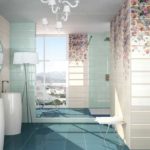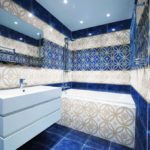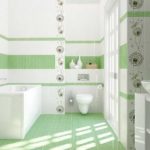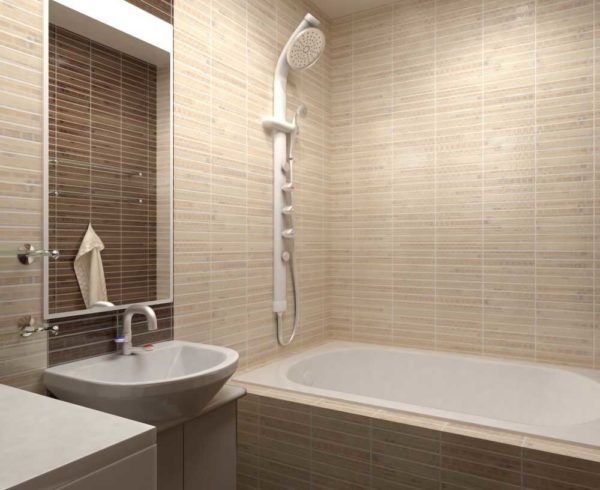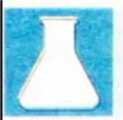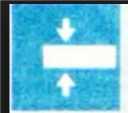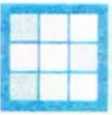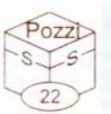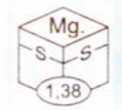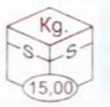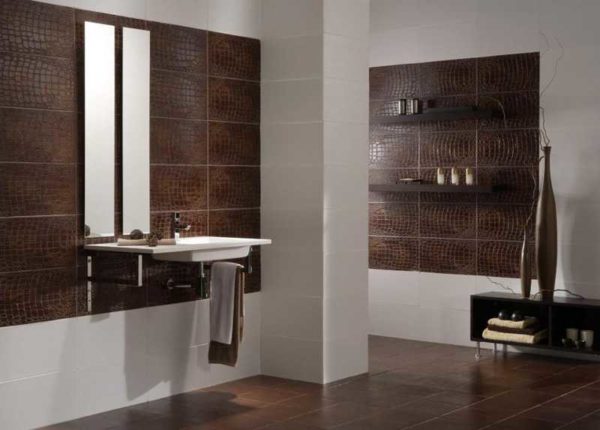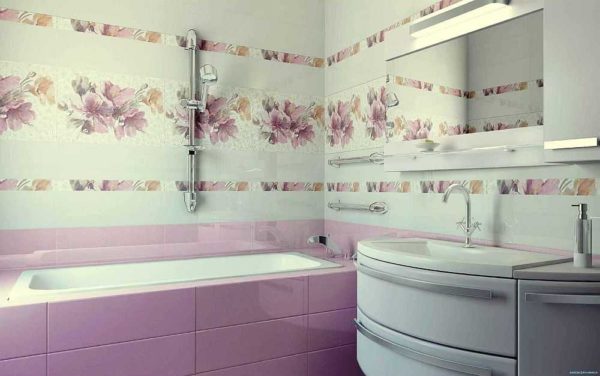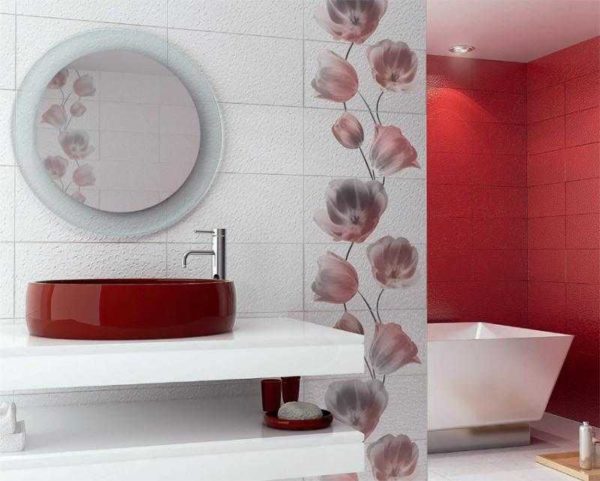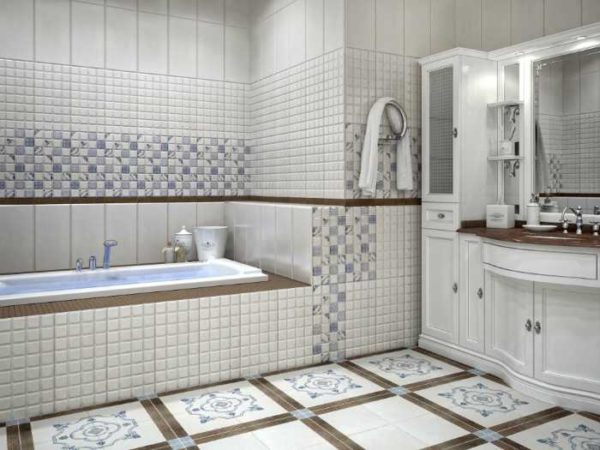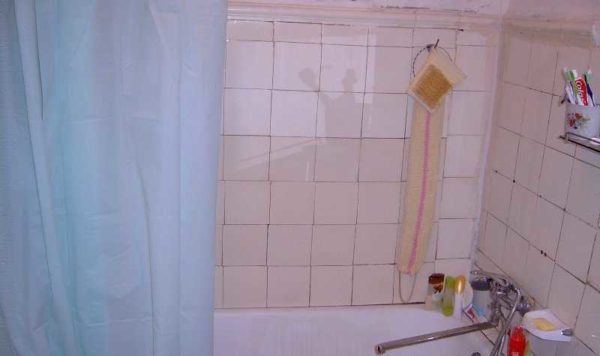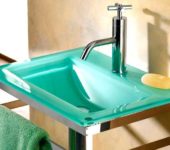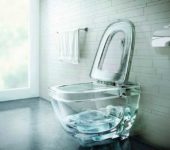Bathroom tiles: how to choose on the floor, walls
Finishing a bathroom is a difficult and costly process, and the choice of finishing materials is one of the key points of good quality and longevity of the finish. Tiles in the bathroom are worthy of a separate discussion. Choosing her is not an easy task. It should be not only beautiful, but also reliable, durable, easy to maintain and install.
The content of the article
Why tiles
Tiling the bathroom is the most popular option. This is explained by the good operational and aesthetic properties of this material:
- Durability. High-quality tiles on the walls and floor do not change their appearance for years. It looks good even after 10-20 years, only the way of styling or design is outdated and you want some kind of change. This is what explains the replacement in most cases. And usually they also put tiles in the bathroom, but of a different format or color.
- Not afraid of moisture. Bathroom is a room with high humidity. There may be a lot of steam in the air after showering or bathing. In some areas (shower, bath, washbasin) there is a high probability of direct ingress of water. The tile in the bathroom protects the walls from further penetration of moisture into the thickness of the walls or floor, and is not afraid of this moisture itself.
- Bathroom mosaic is one of the popular options
- Photo printing on ceramic tiles - reliable image transfer makes the bathroom interior unusual
- There are collections for every taste
- You can combine colors, shapes, sizes
- Ease of use. Any ceramic tile washes well. And it withstands not only washing with a rag or sponge, but repeated care using brushes. Stains usually do not stick into the surface and are simply washed off.
- Large selection in terms of shape and size, as well as colors. In addition to the usual square and rectangular shapes, there are polygonal (five, six and octagonal), rounded and complex shapes.
- Laying flexibility. One and the same tile can be laid in different ways, you can combine not only different colors, but also the shapes and methods of installation. This provides a practically myriad of finishes.
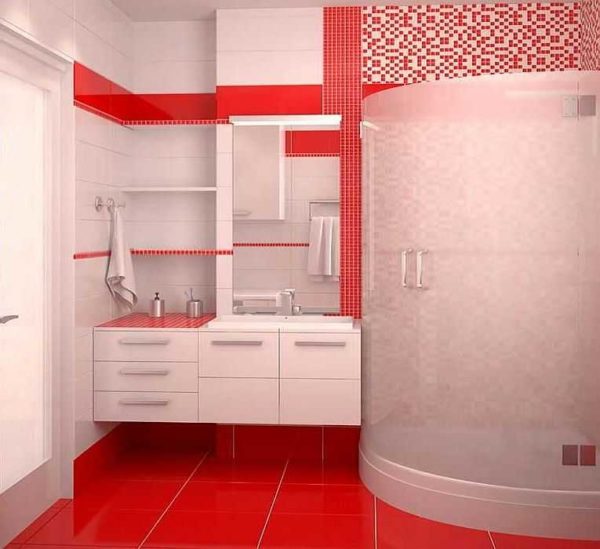
Bright saturated colors - in small quantities. Red tile in the bathroom is a bright mood, but when there is too much of it, it causes anxiety
It is these reasons that determine the high popularity of such finishes as bathroom tiles. There are also disadvantages to this finishing method:
- Complicated styling process. Can do-it-yourself tiles on the floor or walls, but in this case it takes a lot of time and preliminary study of the technology.
- High price. Good quality ceramic tiles themselves cost a lot, in addition, they require align the walls or floor, and also - pay for installation. In general, a solid amount runs up.
More often than not, the advantages outweigh the disadvantages and, during the renovation, the tiles are again placed in the bathroom. To change the setting, change the shape and / or color.
The nuances of choice
The choice in color, size and shape is very wide and here they are based only on their own "want" and "like", but at the same time, you also need to track technical parameters and quality indicators:
- In the bathroom, temperature and humidity changes are commonplace, so you need to choose a moisture-resistant tile. The characteristics describe mainly water absorption. This is the amount of moisture that tiles can absorb. It is indicated as a percentage. For floor tiles, this figure cannot be higher than 3%, for wall tiles it can be higher, but the lower the better. Moisture-resistant tiles are characterized by a dense, low-porous base.In addition, such a material has a reduced conductivity, which is not at all superfluous in a room where there is both water and electrical appliances.
- Since the walls and floor will have to be periodically washed with detergents, and they are chemically active, it makes sense to buy a material that is resistant to chemicals. Especially often, this procedure is carried out in shared bathrooms - to maintain hygiene at the proper level. In this case, we choose the finishing material that is most resistant to chemicals. This characteristic is usually displayed on the label with a flask-shaped pictogram and adjacent Latin letters. For a bathroom, you can take B or A, and for a combined bathroom - AA (the highest level of durability).
- The front surface of the tile has different abrasion resistance. This parameter is indicated by the letters PE and a number. The larger the number, the stronger the surface. Tiles in the bathroom are exposed to light loads on the walls, because the abrasion resistance may be small, but it is worth taking on the floor with PE 2 or 3.
- For ceramic tiles, the front surface can be glossy or matte. On gloss, traces of water are more visible (especially on dark ones). So if the water is hard, it makes sense to choose matte.
- When choosing floor tiles for the bathroom, pay attention to how slippery it will be when wet. This characteristic is also displayed on the label in the form of a pictogram and a number. The numbers are the wet friction coefficient. The higher the number, the less slippery the floor will be. On this basis, it is customary to divide it into four categories:
- less than 0.19 - very slippery;
- from 0.2 to 0.39 - slippery;
- from 0.4 to 0.75 - acceptable;
- above 0.75 - excellent performance.
Correctly selected bathroom tiles will last for years. To keep it that way, pay attention to its specifications. They are usually displayed as pictograms on the box. If you know the decoding of all the icons, the choice will not be difficult. Those pictograms that are relevant for the selection of tiles in the bathroom are shown in the table.
What color, shape and size
It's easy to get lost in the stunning variety, even in a relatively small store. There are several guidelines to help you that will make the choice easier. First of all, you should decide on the size. It will be rectangular or square - you choose, and only on the basis of "like it or not," but it makes sense to calculate the dimensions.
Size selection
The size of the tiles can be selected based on the dimensions of the bathroom. This is especially true in small rooms, where we take a look at everything at a glance.Everyone knows two immutable rules - in small rooms it is not worth using a very large tile (it will seem even smaller), and a rectangular tile laid vertically visually "raises" the ceilings. By the way, columns of a different color give the same effect. But the specific dimensions are selected according to the dimensions of the room itself.
When choosing the width of the tile, the wall opposite the entrance is taken as a reference point - it catches the eye immediately. You measure it exactly, choose the tile so that it fits without trimming, or this trimming is minimal (do not forget about the joint width - it must also be taken into account).
When choosing the height of the tile, you can focus on the height of the bathroom, shower tray or washbasin. Washbasin, if you wish, you can raise / lower a little, but with a bathroom this trick is bad. Therefore, they try to fit an integer number of tiles to the side.
Since there are so many tile sizes, the chance of finding the perfect one is great. But not everyone is so scrupulous in the little things, so you can omit this stage, and focus only on preferences.
What colour
Regarding color - red, blue, green, etc. - no one can give you advice for sure. Again, rely on your own preferences. But when choosing shades, there are certain recommendations:
- In a small room, it is better to use light colors. This makes it look more spacious. You can also use dark ones, but only in fragments - lay out a strip (vertical or horizontal), part of a wall or even one wall, but certainly not the whole room. In the design of the bathroom with tiles, as well as with wallpapering, practice combining several "friendly" or contrasting colors.
- Use warm colors to keep the atmosphere from operating.
- A large drawing looks great in a spacious bathroom, and a small one makes it even smaller. Therefore, small or medium-sized tiles are used in small bathrooms, and if you want a drawing, then not very large or in the form of a small fragment. We advise you to pay attention to the mosaic. She is very beautiful and looks great in small spaces. Minus - it is expensive. The way out is to find a tile of a standard size, but imitating a small one (as in the photo below). At a price it is cheaper than a mosaic, but it looks almost the same.
The rest of the choice is unlimited. Bathroom tiles can be of the color and combination that you like. But the most advantageous are the options for combining a brighter and more saturated color with neutral ones. Neutrals are white and its shades, gray, beige. Of these, beige is the most commonly used. For example, a combination of dark red or burgundy and beige is often found, brown (chocolate) is also combined with it. Bathroom tiles look no worse when combined with green and beige, pink and gray (or also beige).
The most difficult thing is to choose a companion color for yellow and orange. The safest option is white, but not snow-white, but creamy or with a very light pinkish tint. You can try to find a shade of gray, but you need to select it for a specific color. In any case, try to choose from "warm" shades.
How to define quality
Deciding on the technical parameters and color is not all. We still need to check the quality. To avoid problems during installation and operation, the tiles in the bathroom should be of high quality, and the quality can be determined even visually:
- There should be no glaze defects on the front surface. Generally speaking, our GOST allows no more than two glaze delamination in one piece. In this case, the party is considered to be of good quality.But who needs tiles in the bathroom with defects that will increase the absorbency of the finish? Therefore, if funds are available, even in spite of significantly higher prices, they buy imported tiles. In it, such a marriage is very, very rare, while domestic ones can be - every fourth with a defect.
- It is necessary to examine and compare several tiles from the same pack for the coincidence of sizes. Ideally, they should not differ (imported), but in real life a difference of plus or minus a millimeter is considered normal. Then, when laying, you will have to use crosses of two sizes - say 2.5 mm and 3 mm. In finished form, the difference is almost imperceptible.
- You also need to check the plane of the tile. It should be flat, without bends. In this case, putting it down is easy. But there are parties in a concave or convex middle, with protruding edges, etc. These are all signs of poor quality tiles.
- It is also necessary to examine the back side. It should be smooth, dense, uniform, without large pores. The loose back side absorbs a lot of moisture. Such tiles are not suitable for the bathroom. We'll have to look for another option.
All these operations must be carried out not with one tile, but with several, preferably from several boxes. If after the inspection you are satisfied with everything, you can move to the checkout.


